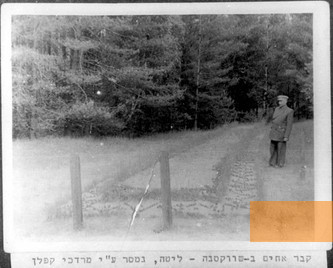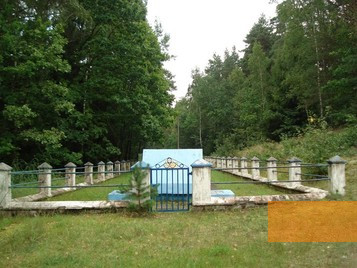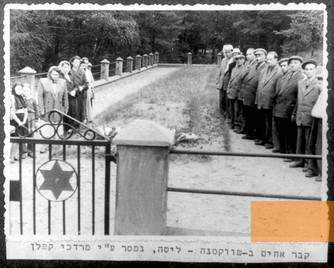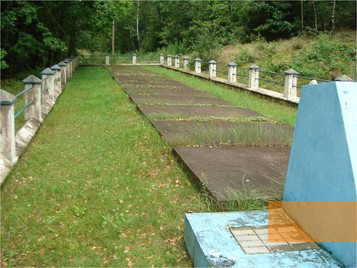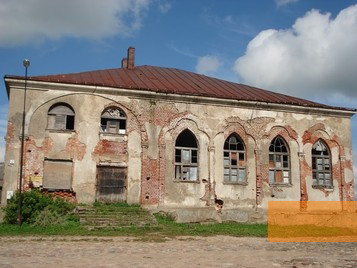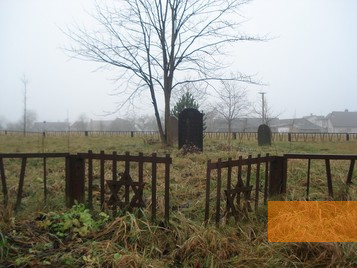Almost all 500 Jews of the small Lithuanian town of Švėkšna were murdered in September 1941. They rest in a mass grave near the town.
For centuries the small town of Švėkšna (German: Schwestnau or Schwekschnen) was situated in the Lithuanian-Prussian borderland. Already prior to World War I the town was Lithuanian, which in turn was part of the Russian Empire. The next city was East Prussian Heydekrug (Lithuanian: Šilutė) on the other side of the more or less open border to the German Empire.
Lithuania emerged as an independent state from the First World War. In 1932 Lithuania occupied the so-called Memel Territory (Lithuanian: Klaipėdos kraštas) including the cities of Klaipėda (German: Memel) and Heydekrug. Beginning of 1939 Lithuania had to return the Memel Territory to the German Reich under massive pressure from Berlin. Subsequently many Jews fled from those territories to Lithuanian towns like Švėkšna. In 1940 Lithuania was occupied by the Red Army and annexed to the Soviet Union in compliance with a secret German-Soviet treaty. When on June 22, 1941 the German Wehrmacht attacked the Soviet Union, Švėkšna was occupied instantly. At that time about a quarter of the population of 2,000 were Jews. On June 27 a group of SS-men from Heydekrug turned up and arrested numerous Jewish men who were sent to Heydekrug to conduct forced labour. All other Jews had to move to a ghetto. In September 1941 they were taken to the nearby forest of Inkakliai and shot there, presumably by Lithuanian accomplices of the SS.
Lithuania emerged as an independent state from the First World War. In 1932 Lithuania occupied the so-called Memel Territory (Lithuanian: Klaipėdos kraštas) including the cities of Klaipėda (German: Memel) and Heydekrug. Beginning of 1939 Lithuania had to return the Memel Territory to the German Reich under massive pressure from Berlin. Subsequently many Jews fled from those territories to Lithuanian towns like Švėkšna. In 1940 Lithuania was occupied by the Red Army and annexed to the Soviet Union in compliance with a secret German-Soviet treaty. When on June 22, 1941 the German Wehrmacht attacked the Soviet Union, Švėkšna was occupied instantly. At that time about a quarter of the population of 2,000 were Jews. On June 27 a group of SS-men from Heydekrug turned up and arrested numerous Jewish men who were sent to Heydekrug to conduct forced labour. All other Jews had to move to a ghetto. In September 1941 they were taken to the nearby forest of Inkakliai and shot there, presumably by Lithuanian accomplices of the SS.
Almost all 500 Jews from Švėkšna were murdered in September 1941. Only some Jews abducted in June 1941 as forced labourers had a chance to survive.
Since 1941, there are no more Jews living in Švėkšna. Whereas the Catholic and the 200 year old Lutheran church are in sound condition, the synagogue at the market place is abandoned and derelict. Meanwhile it is listed as a cultural heritage site. The Jewish cemetery is preserved as well.
Shortly after the war the mass grave holding the remains of the murdered Jews of Švėkšna in the forest of Inkakliai was marked with stones and fenced in. There are signposts on the surrounding country roads pointing to the site.
Shortly after the war the mass grave holding the remains of the murdered Jews of Švėkšna in the forest of Inkakliai was marked with stones and fenced in. There are signposts on the surrounding country roads pointing to the site.
- Name
- Žudynių vieta Inkaklių miške
- Open
- The mass grave in the forest of Inkakliai is accessible at all times. The synagogue is closed.


